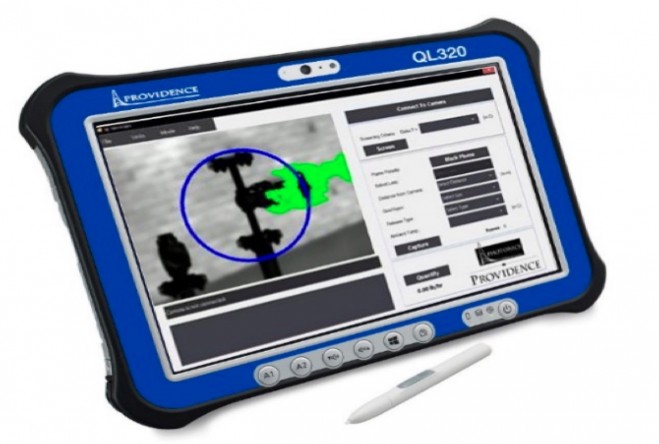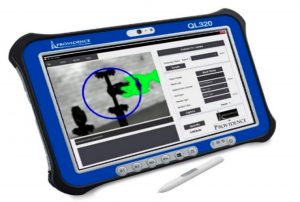

A FLIR GF320 OGI camera works with the Providence Photonics QL320 (pictured) to give users the ability to reduce emissions while quantifying benefits in terms of liters per minute or grams per hour emitted.
Infrared (IR) thermal imaging cameras have been used for decades for a variety of oil and gas applications, including electrical/mechanical inspections, tank level inspections, and even examinations of pipe integrity within process equipment. In recent years, new optical gas imaging (OGI) technology has been developed that can “see” hydrocarbon gases and volatile organic compounds (VOCs) that are venting or leaking to the atmosphere. OGI can be used for meeting regulatory emission reduction requirements, while also helping to reduce product loss, which in turn provides positive return on investment. OGI cameras are a huge time saver compared to other inspection technologies and also offer safety advantages for operators.
The U.S. natural gas industry as a whole emitted 162.4 million metric tons CO2 equivalent of methane in 2015. In addition to regulatory compliance issues, this equates to lost product for operators. The industry is faced with how to best find and repair natural gas leaks at potential escape points, including compressor stations, processing plants, hydraulically fractured wells, and along transportation lines.
Before the development of OGI cameras, most oil and gas facilities used a toxic vapor analyzer (TVA), otherwise known as a “sniffer,” to analyze gas concentration levels and quantify gas emitted to the atmosphere. TVAs are reliable, relatively low cost, and can identify most gases. The disadvantage compared to an OGI camera is that the operator must know exactly where to go to look for the fault—and physically touch it. Also, OGI is considerably (5-10 times) faster than a sniffer.
Optical gas imaging also offers several safety advantages over a traditional TVA. It enables remote detection of a gas that could potentially explode or cause health issues to those breathing in the gas. OGI cameras enable operators to remain at a safe distance away during inspections. Rather than standing in a cloud of gas, they can remain on the ground, point to a spot 10 or 20 feet high, and determine if it is leaking gas into the atmosphere.
There are no upcoming events.
